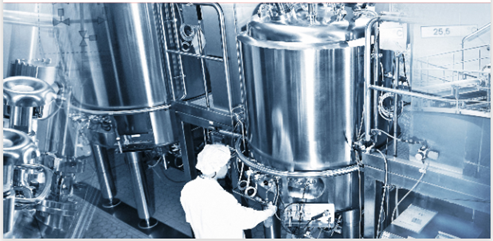Home > Article: How Can Bioreactors and Bioprocess Systems Have More Efficient Flow Control?
How Can Bioreactors and Bioprocess Systems Have More Efficient Flow Control?
Pharmaceutical companies have resorted to biologics to address the growing need for more potent and precise medications to treat complicated and currently untreatable ailments (including cancer and myriad genetic diseases). Biologics and biosimilars vary from traditional medications in that they are produced utilizing live cells rather than chemical procedures. This process takes place in a controlled environment known as a bioreactor or fermenter. Process and automation professionals face some particular obstacles in the bioreactor environment. Complicated control schemes, particular materials, and complex gas control systems are all used in the bioprocessing processes that are required. The mass flow demands within the reactor can expand exponentially as the organisms develop, far more than in most conventional chemical and industrial processes.

A typical gas input scheme for a global premier biologics manufacturing is depicted in the diagram. It's worth noting that this design necessitates both high and low flow lines for oxygen and process air. The restricted adjustable range of the mass flow controllers employed necessitates the usage of several mass flow lines. The oxygen flow lines, for example, show one controller for flow rates less than 35 SLPM and another for flow rates less than 100 SLPM. For the controller given, these flow ranges suggest a controllable range of no more than 50:1. Alicat suggested that using Alicat's mass flow controllers might simplify this design. The newest Alicat mass flow controllers offer an adjustable range of up to 10:000:1, which is significantly more than the 30:1 that requires a dual flow range design and is an improvement over the 200:1 that was previously available.

Feed pressures in bioreactors are usually around 50 psig or less. Under normal settings, Table 1 demonstrates the flow rate error of a conventional Alicat BIO series 10 SLPM (Standard Litres per Minute) controller when reduced from 10 SLPM to 1 SCCM.

Regardless of the measuring technique utilized, virtually every current mass flow controller can be adequate within the centre and top of its defined flow range. The mass flow inaccuracy of the Alicat mass flow controller is just 0.6 percent towards the top of the scale and 1 percent at 1 SLPM. The great degree of precision at extremely low flows is what permits the flow range simplification stated. Up to a 100:1 turndown, an Alicat MFC has an inaccuracy of less than 10% of the required flow rate.
For a 10 SLPM flow controller, even at 1000:1, the flow inaccuracy is only 0.01 SLPM. Using an Alicat mass flow controller with a differential pressure-based monitoring approach, this biologics company may decrease the total lines required for this system from 5 to 3. This reduces the cost of parts, building time, and control systems for this section of the bioreactor by 33%. All the while, the design is being simplified, redundancy is being increased, and the number of possible failure sites is being reduced.
Alicat's laminar flow monitoring technique enables several of the following benefits. This method not only provides very large controllable ranges, but it is also equally accurate for any gas controlled; no inaccurate K factors or other compensating approaches are required. This means fewer spare parts are required because every unit can function with any gas. The unit's front touchscreen makes it simple to change gases using Alicat's "gas choose" function. All without sacrificing accuracy or necessitating re-calibration.
Thermal measuring technique is extensively used in other mass flow controllers. While this technology has survived the test of time (going back to 1911), thermal units are slow to respond because the temperature of the sensor mass must vary to change the measurement. While modern thermal designs respond faster thanks to predictive algorithms, Alicat's differential pressure approach can respond to control changes in as little as 25 milliseconds — a 50-fold faster response time. Because the presence of water affects the measurement and calibration of the heated flow sensor, thermal units are susceptible to process water contamination. The Alicat mass flow method is mostly unaffected by water pollution (see our previous experiment demonstrating this).
Other characteristics of Alicat's mass flow controllers and meters provide improved accuracy and ease of use. Using existing Alicat software and calibration standards, units may be calibrated in place or on-site. Regardless of whether the devices are operated analogue, digitally, or via an industrial protocol, the calibration technique is the same. An Alicat flow controller may also provide numerous parameters at the same time under these situations. An Alicat flow controller, for example, may simultaneously output mass flow, pressure, valve drive voltage, and temperature. The devices also contain a built-in full-colour TFT display that can be turned 180 degrees for troubleshooting and testing, as well as control through a built-in keyboard.

Alicat's controllers and meters make it possible to create systems that are both simple and efficient. The Bio series offers a completely BPE compliant design, certified USP VI elastomers, your choice of industrial procedure, and much more. Choose the Alicat series mass flow controllers and meters for its exceptional adjustable range to cut bioprocessing expenses while enhancing system performance and reliability.
Want to Know More?
Contact us today to find out more about bioreactors and bioprocessing. Our team will be happy to help with any queries you may have.
